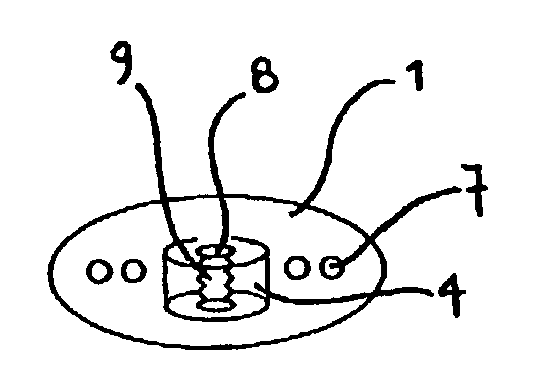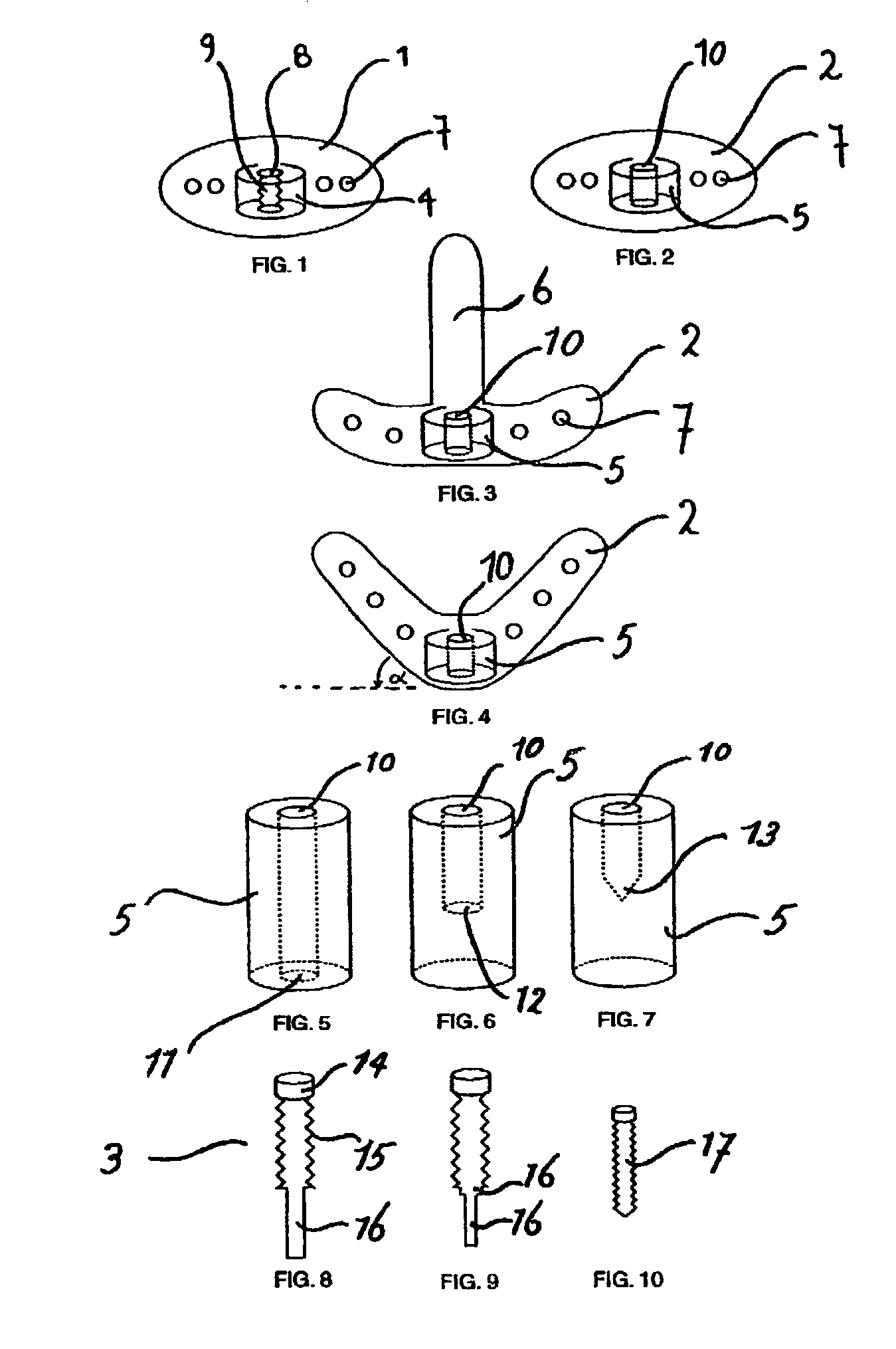Distraction device for maxillofacial surgery
a technology for dislocation devices and maxillae, which is applied in non-surgical orthopedic devices, internal osteosynthesis, medical science, etc., can solve the problems of large distractors, large devices, and large devices, and achieves low risk of infections and other complications, small inconvenience or irritation, and convenient application.
- Summary
- Abstract
- Description
- Claims
- Application Information
AI Technical Summary
Benefits of technology
Problems solved by technology
Method used
Image
Examples
example 1
[0099]A device was manufactured with the following characteristics. The translating bracket comprises a cylinder, 2 perforations and 2 pins that match the perforations. The cylinder has an internal thread. The cylinder is located centrally (viewed in the frontal plane) of and anteriorly (viewed in the sagittal plane) to the translating bracket. The length of the cylinder runs perpendicularly to the plane of the bracket and perpendicularly to the plane of the distraction screw. The inner diameter of the cylinder is 2.0 mm, the thickness of the cylinder wall is 1.5 mm and the height of the cylinder is 3.0 mm.
[0100]The translating bracket comprises 2 perforations. The perforations are positioned in the horizontal to (viewed in a sagittal or transversal plane) the translating bracket, and are completely embedded in the bracket. The perforations are round, smooth and not internally threaded. The perforations match the diameter of the lateral pins and have a diameter of 0.9 mm. The perfor...
example 2
[0119]A second device is manufactured. This device is the same as the first device, but without the guiding rail. Again the device distracted a piece of the model for 20 mm.
example 3
[0120]A third device was manufactured. This device is half the size of the second device, apart from the length of the distraction screw, which was also 20 mm Again the device distracted a piece (part) of the model for 20 mm. When distracted at a length of 20 mm, a device with guiding rail is more stable and shows less torque. A device without guiding rail shows neither distortion nor bending at digital pressure in a mandibular model. While absent in the mandibular model, in the patient's mouth the periosteum and musculo-mucosal envelope would give additional rigidity and buccal tension to the device, likely to prevent the aforementioned slight transverse movement at maximum distraction length of 20 mm. The device was successfully tested in vitro. The design of the device takes into consideration the (specific) anatomical dimensions of the resorbed and atrophied mandible.
PUM
 Login to View More
Login to View More Abstract
Description
Claims
Application Information
 Login to View More
Login to View More - R&D
- Intellectual Property
- Life Sciences
- Materials
- Tech Scout
- Unparalleled Data Quality
- Higher Quality Content
- 60% Fewer Hallucinations
Browse by: Latest US Patents, China's latest patents, Technical Efficacy Thesaurus, Application Domain, Technology Topic, Popular Technical Reports.
© 2025 PatSnap. All rights reserved.Legal|Privacy policy|Modern Slavery Act Transparency Statement|Sitemap|About US| Contact US: help@patsnap.com



